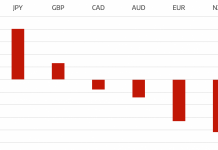
A rare confluence of events is now creating a conducive environment for peer-to-peer (P2P) or marketplace lending and the next six months will be make or break for P2P lending and investing in Australia, says leading data and analytics company GlobalData.
One of the more enduring results of the global financial crisis in 2008 was the rise of P2P investing and lending. However, it has never taken off in Australia the way it did in other markets like the UK or the US.
Andrew Haslip, Financial Services Analyst at GlobalData, says: “The P2P finance platforms used the balance sheet weakness of the incumbent banks, the unrelenting negative headlines of the crisis that undermined the brands of traditional finance, and the rock-bottom interest rates used to shore up the economy to fuel an expansion that gave some of them the volume to be sustainable. It is no coincidence that the hardest hit economies in the actual financial crisis – the UK and the US – saw the largest rises in P2P lending.”
Other Western economies such as Australia and New Zealand never quite witnessed the same conditions and so never saw a similar rise. Sure there was some severe disruption to the financial markets and even some hastily arranged mergers to shore up a few banks, but the other key ingredients of severe brand damage and ultra-low deposit rates never appeared.
Lending did dip but quickly recovered, as Aussie and Kiwi banks suffered little of the carnage seen in Europe or the US. As such, investors could still earn a decent return from safe term deposits, and borrowers could access the finance they wanted from the traditional lenders. Only in key niches such as SME lending did P2P take off.
Haslip adds: “Times are changing though. The negative publicity from the Royal Banking Commission, the higher rates and lower appetite for lending among the big banks – driven by APRA’s macro-prudential tightening – as well as the RBA’s rock-bottom policy rate are recreating the conditions for a market opening.”
For investors there is little competition from term deposits, with average deposit rates at 2.2% in July 2018 (compared to 8.5% in July 2008), and so there is more incentive to lend via platforms such as SocietyOne and RateSetter. For borrowers, the rates on offer at the P2P lenders are increasingly attractive relative to traditional banks as well.
Haslip concludes: “The market conditions are in place for P2P lenders and other new financial providers like neobanks. And these conditions should persist until well after the Banking Commission’s final report in February 2019, with the next six months being the most crucial.”
HedgeThink.com is the fund industry’s leading news, research and analysis source for individual and institutional accredited investors and professionals







































